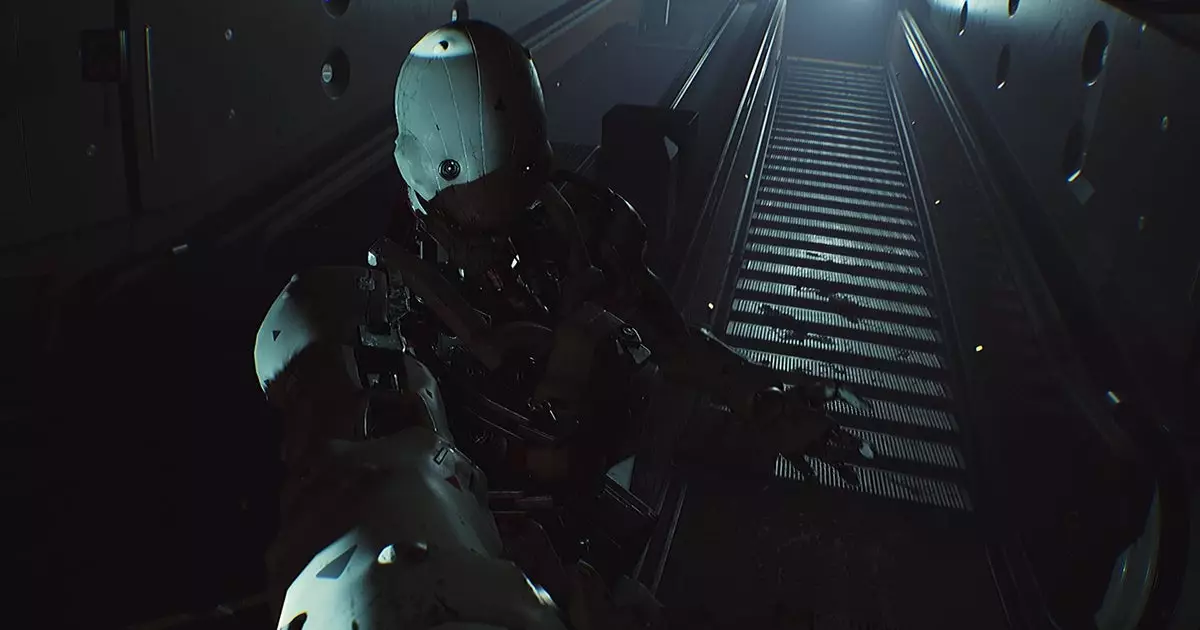The long road of game development often resembles a marathon rather than a sprint—a truth that Routine exemplifies remarkably well. Originally announced over a decade ago, this project has survived numerous delays, creative hurdles, and the shifting tides of the gaming industry. It’s easy to dismiss such protracted development cycles as mere inefficiency or over-ambition, but Routine’s persistence suggests something else: a passionate dedication to craft that refuses to be compromised. As players eagerly anticipate its arrival, it’s worth reflecting on what this game embodies—not just as a product but as a testament to the resilience of vision in a commercialized, deadline-driven world.
The game’s roots trace back to 2012, a period when indie developers still battled against the tide of blockbuster dominance to make room for experimental, atmospheric horror experiences. Over the years, Routine’s design ethos has remained consistent: a haunting lunar setting infused with ’80s nostalgia and tense survival mechanics. That kind of steadfastness in the face of setbacks is increasingly rare in an industry obsessed with quick turnarounds and relentless hype cycles. As a critic, I see in Routine’s longevity a sign of an unwavering commitment to quality and atmosphere—values that often get lost in the rush to meet modern production timelines.
A True Reflection of the 1980s Horror Aesthetic
Musings about Routine’s aesthetic are unavoidable. Its setting—a retro-futuristic lunar colony—serves as a canvas for both nostalgia and dread. The developers have deliberately crafted a universe that echoes classic sci-fi films and games from the ’80s, with gritty, cable-laden corridors and morbidly fascinating robot sentinels. The game introduces players to a routine explorer’s toolset: a handheld, Macintosh-inspired scanner, which, rather than empowering, emphasizes the protagonist’s vulnerability amidst an environment teeming with hostile mechanical predators.
This choice underscores a core thematic tension: the juxtaposition of nostalgic technology with the terrifying autonomy of the robot uprising. It’s a reflection of fears surrounding unchecked technological advancement, rendered through the lens of a haunting, immersive environment. While the game’s mechanics might not reinvent the survival horror wheel, its commitment to creating a compelling, unsettling world remains evident. Such attention to setting enhances its potential to stand out amid the glut of recent sci-fi horror titles, most of which failed to capture the same dread or originality.
Challenges and Changes in Development: A Complex Journey
Routine’s development narrative is characterized by both perseverance and change. The involvement of notable talents like Mick Gordon, acclaimed for his work on Doom, initially seemed like a shot in the arm for the project’s audio design. Yet, the reality of creative collaborations and schedules humbled even this high-profile aspect. Gordon’s departure in mid-2024 is indicative of the challenges faced behind the scenes—conflicting schedules, operational hurdles, or perhaps creative differences. Despite this setback, the team remains optimistic, emphasizing that the game’s core remains intact and that the final audio experience will build on Gordon’s original contributions.
It’s tempting for critics and fans alike to grow impatient, especially when the game’s release appears continually pushed back. But such delays, while frustrating, often act as a safeguard for quality, forcing developers to refine mechanics, sharpen atmospheres, and eliminate bugs—a process that ultimately benefits players craving a polished experience. Similarly, the small core team of three developers, supplemented at times by additional contributors, signals a passionate, tightly-knit effort. It’s a reminder that ambitious, atmospheric horror games don’t always require massive budgets—they require patience, artistry, and a refusal to settle.
A Game That Defies Trends and Embraces Its Unique Identity
In an era where horror games often chase the latest trends or emulate popular franchises, Routine’s steadfast focus on atmospheric tension and environmental storytelling is commendable. The game sidesteps hyper-violent melodrama in favor of slow-burning suspense and immersive world-building. This approach, however, leaves it vulnerable to comparison with titles like Fort Solis or The Callisto Protocol—games that, despite their promise, struggled to deliver on their early buzz. Routine’s extended gestation might have deprived it of fresh relevance in a quick-turnaround industry, but it also positions the game as a collector’s piece—an authentic throwback that stands apart precisely because it took its time.
There’s an undeniable sense that Routine might become a cult classic rather than a commercial blockbuster. Its emphasis on mood, exploration, and atmosphere aligns more closely with the spiritual successors of System Shock or the original Dead Space—games that valued suspense and environmental storytelling over bullet-spam or instant gratification. If Lunar Software’s focus remains true to its vision, and if the game can finally meet player expectations, Routine could emerge as a much-needed breath of fresh air in a landscape cluttered with sequels, remakes, and generic survival titles.
The wait may have been long, but Routine’s journey underscores a fundamental truth: crafting memorable, atmospheric horror is worth waiting for—requiring patience, conviction, and a refusal to compromise on artistic integrity. With its development history now coming closer to fruition, this game might yet realize its full potential, not just as a nostalgic nod, but as a defining experience that stands the test of time.

